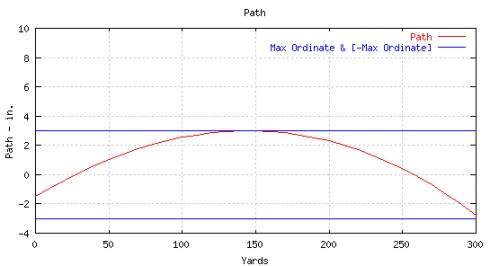This is one of those points where I am waiting for UPS to drop off material so I can go on and finish some articles, so we began fiddling with the site to see if we could upgrade some of the resources. Some of it was fun, some of it is boring, hopefully all will result in some benefit to site visitors.
We took a stab at upgrading the RealGuns Ballistics calculator to include an auto best zero calculation, and a catalogue of standard components. The problem wasn’t integrating the applicable math, or adding component data, as much as addressing some logic of presentation, and writing help screens that do something other than babble through what should be a straight forward explanation.

In the current version, selecting bullet diameter generates a bullet list under “Bullet Weight”, and provides the option of picking “No Selection” which allows manual data entry in the various bullet characterization fields. Selecting a specific bullet from the list auto completes bullet weight and BC. In this new version, the zero distance can be entered manually, or a target size or critical kill area can be selected and zero will be automatically calculated. So what does this all get you…
 In this example, I selected a catalogued 160 grain .284″ bullet, pushed at 3,000 fps with a 6″ critical target size; a typical 7mm magnum load. The point of reference for trajectory data is line of sight; the straight imaginary line that runs from the shooter’s eye, through the sights and onto the target. Drop tables track the arced path of the bullet, the rise above and the fall below this line of sight. Typically the bullet crosses the line of sight twice, once when it rises above the line of sight, or near zero, and again when it falls below the line of sight, or far zero. Midrange yards is the range at which the highest point of trajectory occurs, Max ordinate is the distance in inches the bullet has risen above the line of sight when it is at midrange yards. Point blank range, in this example, means the shooter can hold on the center of a 6″ diameter target and be assured that from the muzzle to a distance of 303 yards the bullet will not go over or under the target. Over the entire range, the bullet will go no higher or lower then 3″ above or below the line of sight. So the ballistic calculator can tell you the optimal zero setting for any given bullet at your specified velocity. OK, biggo deal, now what?
In this example, I selected a catalogued 160 grain .284″ bullet, pushed at 3,000 fps with a 6″ critical target size; a typical 7mm magnum load. The point of reference for trajectory data is line of sight; the straight imaginary line that runs from the shooter’s eye, through the sights and onto the target. Drop tables track the arced path of the bullet, the rise above and the fall below this line of sight. Typically the bullet crosses the line of sight twice, once when it rises above the line of sight, or near zero, and again when it falls below the line of sight, or far zero. Midrange yards is the range at which the highest point of trajectory occurs, Max ordinate is the distance in inches the bullet has risen above the line of sight when it is at midrange yards. Point blank range, in this example, means the shooter can hold on the center of a 6″ diameter target and be assured that from the muzzle to a distance of 303 yards the bullet will not go over or under the target. Over the entire range, the bullet will go no higher or lower then 3″ above or below the line of sight. So the ballistic calculator can tell you the optimal zero setting for any given bullet at your specified velocity. OK, biggo deal, now what?

After the best zero table comes the drop table. Essentially, if you have the best zero, you could go to the range, and sight in at any range indicated on the Path line in the table. You could go to the range and sight in your rifle to place a bullet 1″ high at 50 yards, or 2.5″ high at 100 yards, or… By doing so, you would have sighted in to duplicate the indicated arc. What does that path of flight look like?

The horizontal line labeled “0” is the line of sight. The red arcing line is the path of the bullet above and below the line of sight. The distance between the top blue line and bottom blue line is the 6″ target size I selected. Where the red line first intersects the 0″ line on the way up is the near zero, where it intersects on the way down is the far zero.
.Is this a perfect tool that can take the place of shooting a rifle over long distances for the sake of proficiency and real world understanding of a specific rifle. No. But it is a good approximation of real world bullet behavior, at least as accurate as any piece of commercial software floating around out there. The formula implementation does a good job of taking into consideration varying BC values based on changing velocity.
We hope this generation calculator offers an improvement over the previous version and, if there is something more we can add that will be helpful, let us know. Next up on RealGuns? Back to handloading.
Thanks
Joe

Email Notification